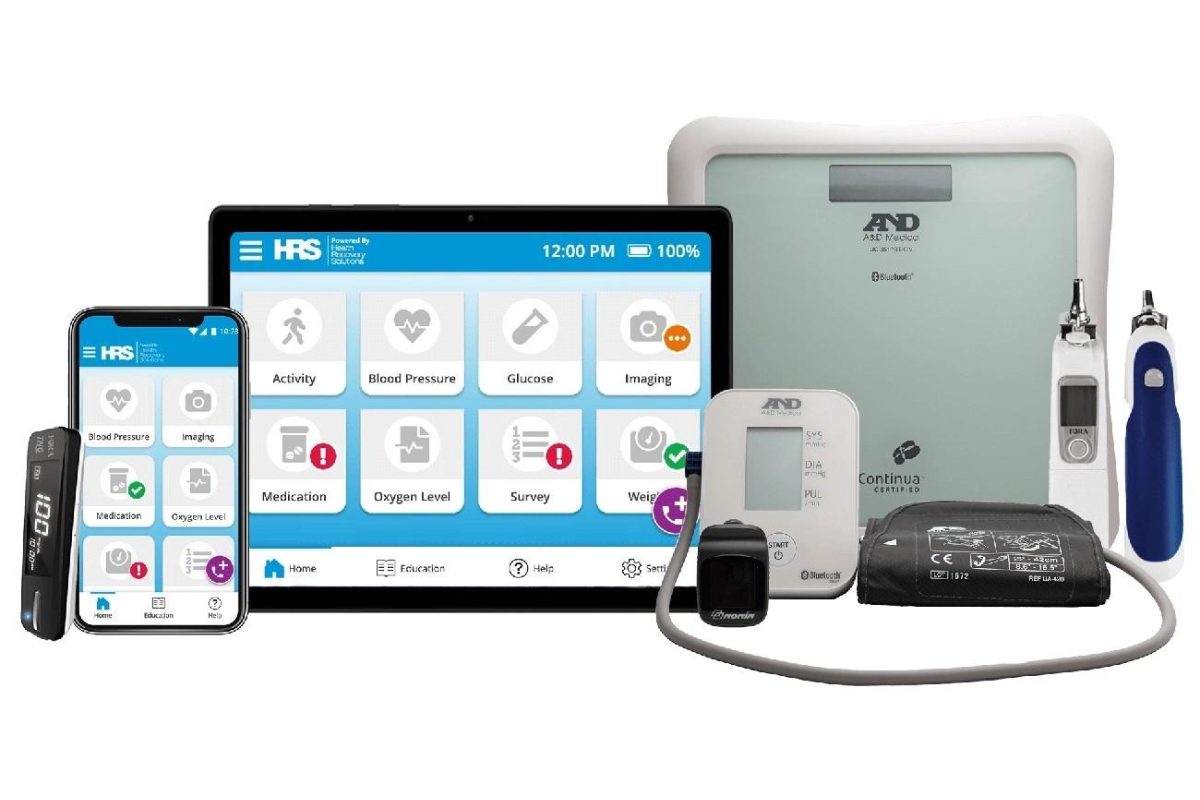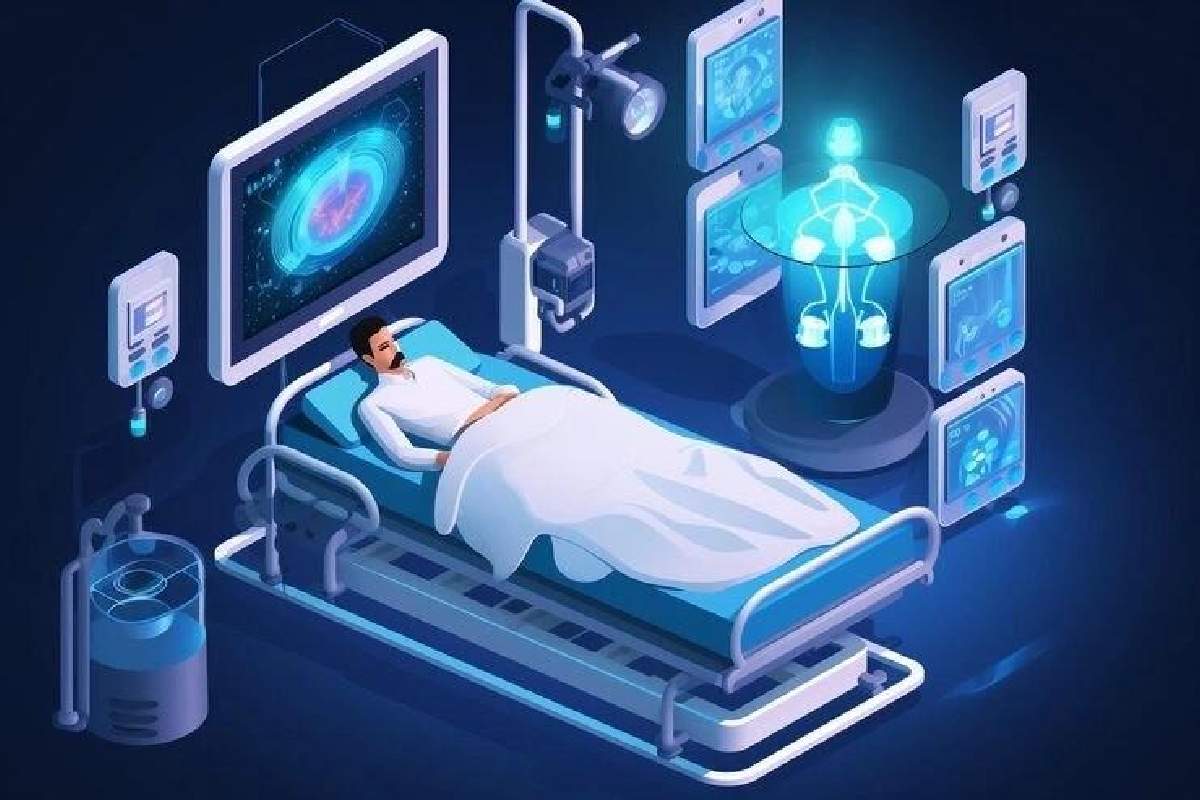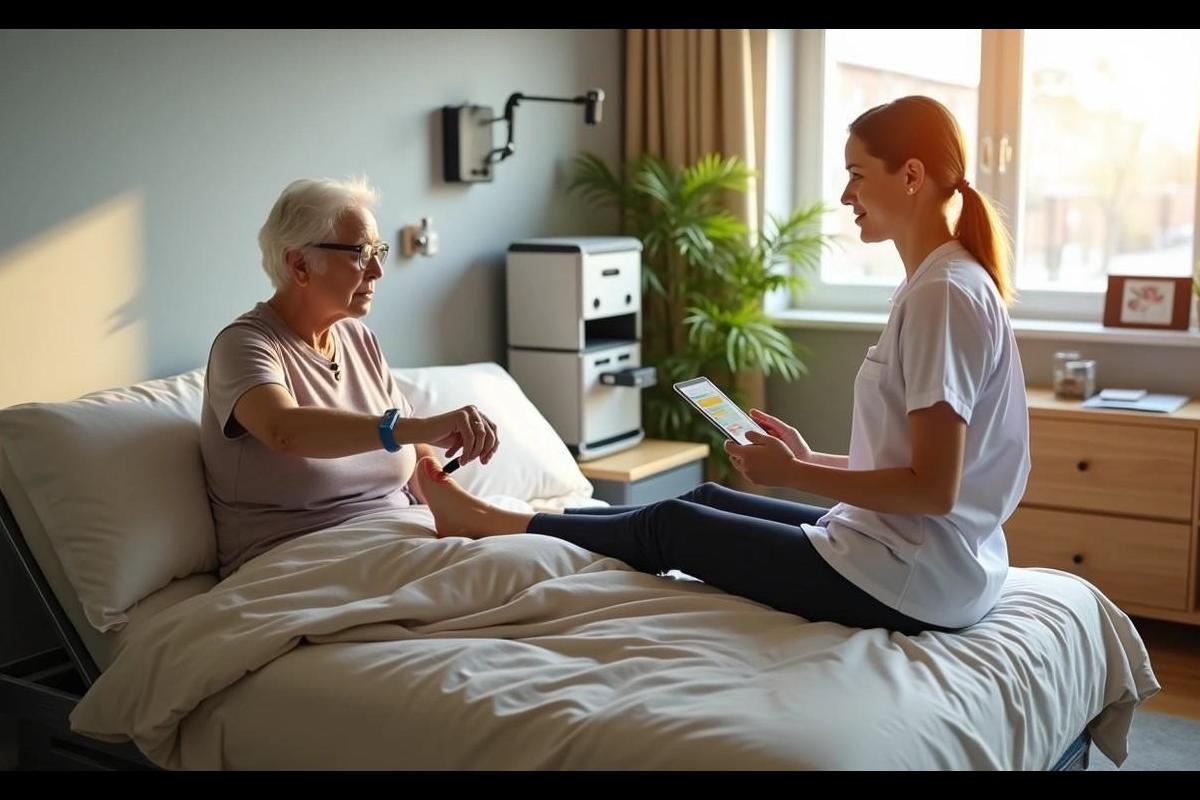Modern home health technology is changing how patients recover from illness and injury outside hospitals. U.S. health system leaders recognize this shift. Nearly all of them – 99% – view digital transformation as vital to advance healthcare in their communities. The sector shows remarkable growth. The fourth largest home health provider in the U.S. now serves 25,000 to 30,000 patients daily across 14 states.
Latest medical technology brings impressive improvements to patient outcomes. Telehealth integration has cut 30-day hospital readmission rates dramatically. The rates now stand at 12.6% – about half the national average of 24%. Healthcare technology continues to expand rapidly. Experts project the U.S. healthcare IT market will reach around 6 trillion USD by 2026. This piece explores cutting-edge healthcare technology that transforms at-home recovery. We’ll look at how these innovations help patients heal more effectively and comfortably.
Types of At-Home Recovery Technologies

The digital world of at-home recovery now features a range of technologies that enable patients to heal better outside clinical settings. These breakthroughs include everything from basic passive devices to advanced active monitoring systems that have altered the map of recovery experiences.
Active vs. passive systems
Active and passive recovery technologies differ in their healing approach. Also, Active recovery systems help healing through continued low-intensity exercise. They clear lactate from the bloodstream and move negative products away from muscles. Passive recovery technologies do the opposite by minimizing physical strain. This lets muscles relax completely. Passive treatments work best to provide quick relief for acute, injury-related pain. Active approaches improve physical abilities like strength and motor control, which boost self-efficacy. The best recovery plans use both approaches instead of picking one over the other.
Monitoring tools: vital signs, sleep, movement
Modern monitoring tools are the foundations of effective at-home recovery. Remote patient monitoring devices track vital signs including:
- Blood pressure and heart rate using Bluetooth-enabled cuffs
- Oxygen levels via pulse oximeters, which are vital for respiratory conditions
- Blood glucose through connected glucometers
- Weight changes with Bluetooth scales
Sleep tracking technologies have become more advanced. Devices now use infrared, red, and green LED light beams to measure respiratory rate, heart rate variability, blood-oxygen levels, and body temperature. Movement monitoring uses wearable sensors—particularly inertial measurement units (IMUs), accelerometers, and gyroscopes—for continuous home-based motor monitoring. Research shows these devices work reliably with mean sensitivity of 89.2% and specificity of 77.8%.
Emergency detection and alert systems
Safety is the top priority in at-home recovery. Emergency alert systems provide round-the-clock protection through wearable pendants, wall-mounted buttons, or advanced fall detection technology. Modern systems now offer protection at home and outside through GPS capabilities. Fall detection pendants can automatically alert monitoring professionals even when users can’t press buttons. Most monitored systems connect to trained professionals who assess emergencies and contact appropriate responders. While no fall detection system works perfectly, they improve safety by a lot for recovering patients. Studies show 94% of surveyed users had professionally monitored devices.
How Technology Supports Daily Recovery
Technology makes recovery at home easier by helping with everyday challenges. Smart devices work as extensions of healthcare systems and support patients through everything in recovery.
Medication reminders and cognitive aids
Patients don’t take their medications on time 80-85% of the time and completely forget them 44-46% of the time. New technology helps solve this problem:
- Smart medication systems include pill dispensers that give out correct doses automatically and let caregivers know about missed doses. Some systems use voice reminders like “Good morning! Please take your morning pills for the 20th”.
- Mobile applications like Medisafe (rated 4.7 stars on iOS and 4.6 on Android) keep track of medications, remind you about refills, and warn about drug interactions. One study found that daily text reminders dropped forgotten medication rates from 46% to just 5%.
- Bioingestible sensors in pills send smartphone alerts when medication is taken to create adherence profiles.
Safety and security enhancements
Safety at home is vital during recovery. Touch pad key locks, dual function door security bars, and specialized door handle sets keep patients from wandering – especially helpful if you have cognitive impairments. Water detector alerts spot standing water from overflows to prevent accidents.
Smart stove knob covers help prevent fires, while interconnected smoke and carbon monoxide detectors warn about dangers quickly. These devices give caregivers peace of mind. The risk is real – seniors over 65 are 2.5 times more likely to die in fires than others.
Social interaction and mental health tools
Social connections play a huge role in recovery. Harvard Medical School research shows people with strong social bonds bounce back faster from heart attacks and strokes. The risk is serious – socially isolated people are four times more likely to die after heart attacks.
Digital mental health tools keep these vital connections strong. Apps for virtual meetings and support groups help patients stay in touch with their support networks. Online therapy platforms like BetterHelp and Talkspace connect patients with licensed therapists through different communication options. Community support forums on Reddit and Facebook let patients encourage each other and fight isolation during recovery.
Challenges in Adopting New Recovery Tech
Recovery technologies offer promising benefits, but several roadblocks stand in the way of their adoption. We need to understand these challenges to develop better home health solutions that work.
Usability for older adults
Seniors find it hard to adopt new medical technology. Only 42% of people over 65 own smartphones. The biggest problems are cognitive limits like reduced memory and attention span. Other challenges include low confidence with computers and physical limits in motor skills and coordination. Older adults can learn new systems but need extra training and support. Research shows they feel less confident with technology than younger people.
Privacy and obtrusiveness concerns
Healthcare technology keeps advancing and privacy worries grow stronger. People don’t feel comfortable with cameras watching them at home. They find visual sensors more invasive than ambient ones. Users worry about protecting their home and body from intrusion. They also want to protect their thoughts from outside influence. On top of that, it raises questions about data security since these technologies collect sensitive health data that needs protection.
Affordability and access
Cost remains the top reason people hesitate to adopt new technology. Advanced recovery devices like exoskeletons cost anywhere from $30,000 to $100,000. Home-based telerehabilitation could save money – one study showed it cut costs by 65% ($2,352 per person) compared to clinic therapy. Limited access to rehabilitation facilities affects recovery outcomes badly. The situation might get worse as monitoring technologies need smartphones and devices that aren’t accessible to more people.
Implementing Smart Recovery at Home

Home health technology works best with a well-laid-out approach. A good at-home recovery system needs careful planning in many areas.
Telehealth integration and virtual visits
Telehealth reshapes the scene of post-discharge care through virtual check-ins, remote triage, and secure video visits. Patients who receive blended digital health education understand their conditions better and show more motivation to care for themselves. These services cut readmission rates substantially. A study revealed that patients who participated in structured telemonitoring programs went back to the hospital nowhere near as often.
Integrating advanced recovery tools
Remote Patient Monitoring (RPM) gives patients the tools they need to track vital signs and recovery progress at home. Healthcare providers can spot potential problems early and adjust treatment plans based on live data. Care teams receive continuous health information from wireless blood pressure cuffs, pulse oximeters, and weight scales.
Another advanced recovery option gaining traction is hyperbaric oxygen therapy (HBOT). Traditionally used in clinical environments, HBOT delivers concentrated oxygen in a pressurized chamber to speed tissue repair, reduce inflammation, and support healing from chronic conditions. Today, patients can access this treatment at home with a portable hyperbaric oxygen chamber, making it easier than ever to experience the benefits without traveling to a facility.
Creating a personalized care plan
Care plans list health conditions, treatments, and specific needs. They keep caregiving priorities organized and maintain consistency when providers change. Well-implemented care plans lead to fewer emergency room visits and hospitalizations. The focus shifts to prevention rather than reaction to problems.
Training caregivers and patients
Caregivers learn vital skills like giving medication, moving patients safely, and caring for wounds. Until September 2025, caregivers can get training through telehealth whatever their location. Digital education systems with 3D content and videos boost patient participation. This leads to productive question-and-answer sessions between patients and providers.
Conclusion
At-home recovery is entering a new era. From remote monitoring tools to smart medication systems and even advanced treatments like portable hyperbaric oxygen therapy, technology is helping patients heal faster and more independently.
While affordability, usability, and privacy remain challenges, the benefits are clear: lower hospital readmission rates, better adherence, and improved outcomes.
As healthcare continues to evolve, the goal stays the same — empowering people to recover safely in their own homes with the support they need.



